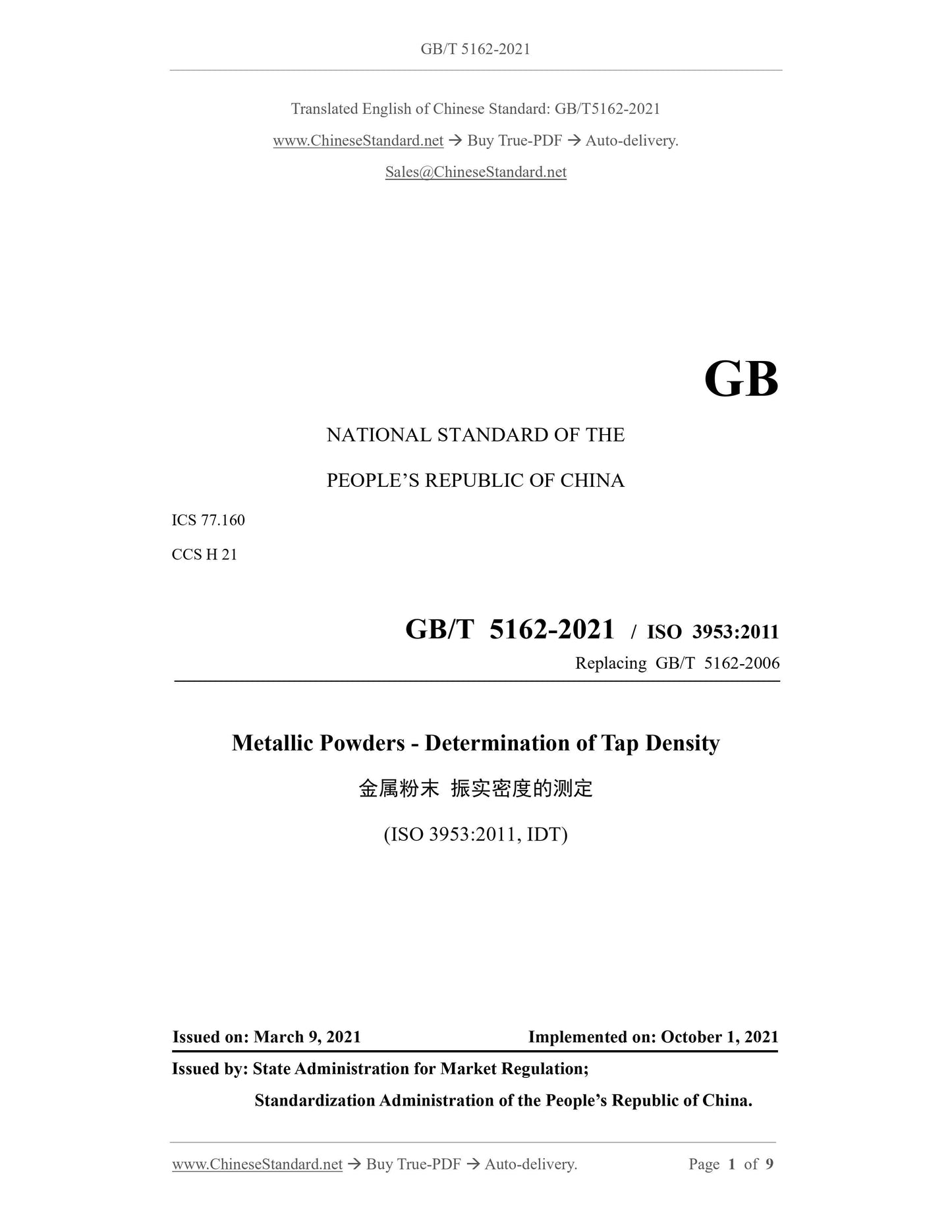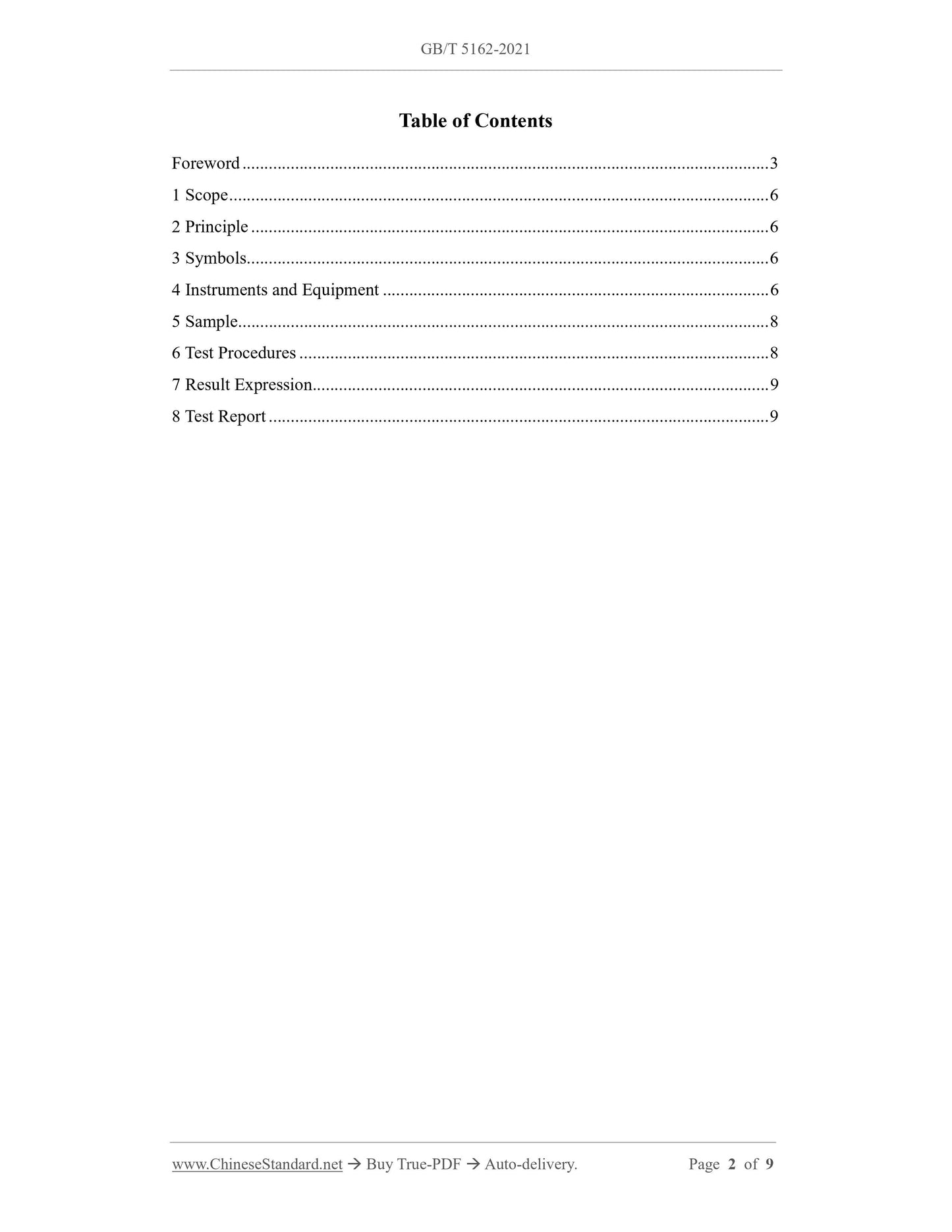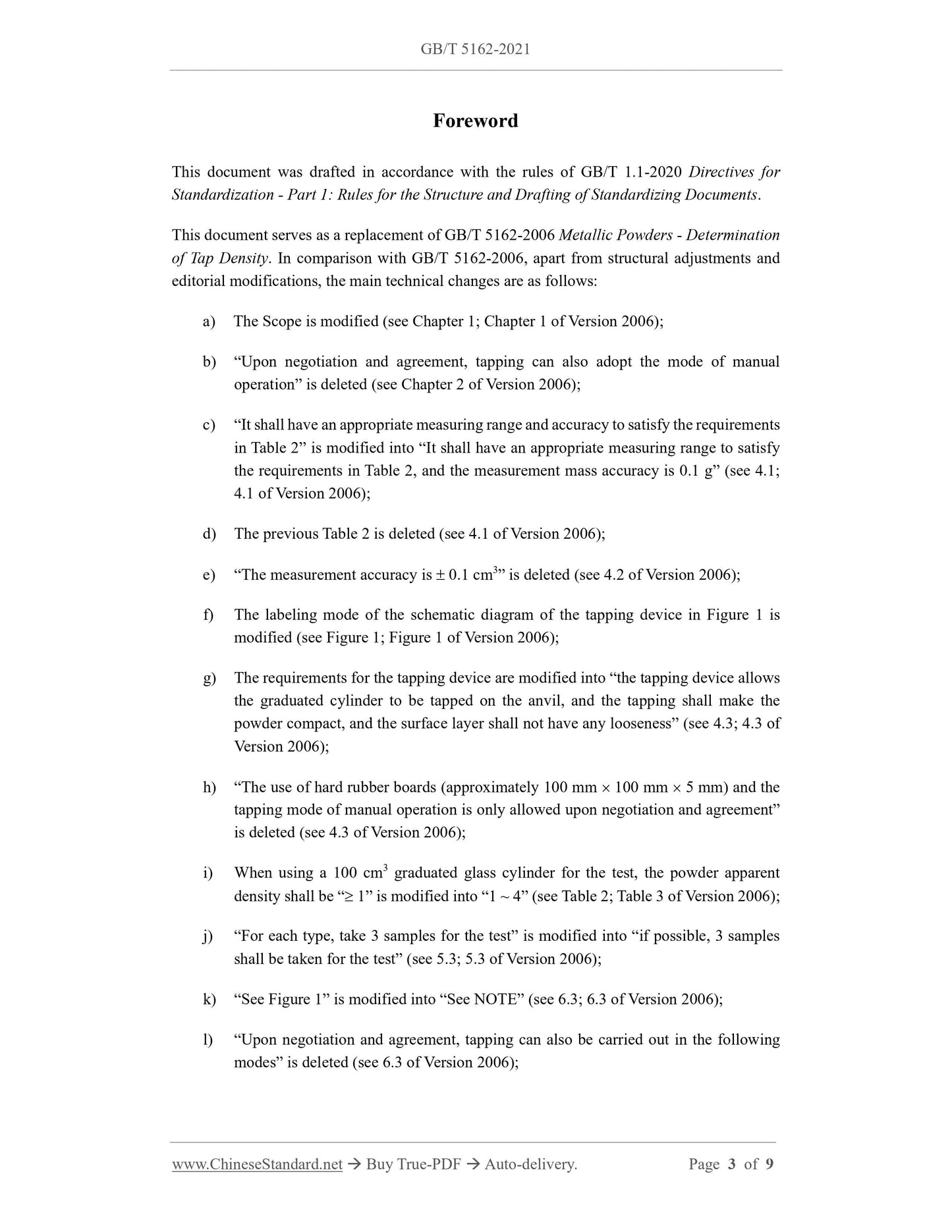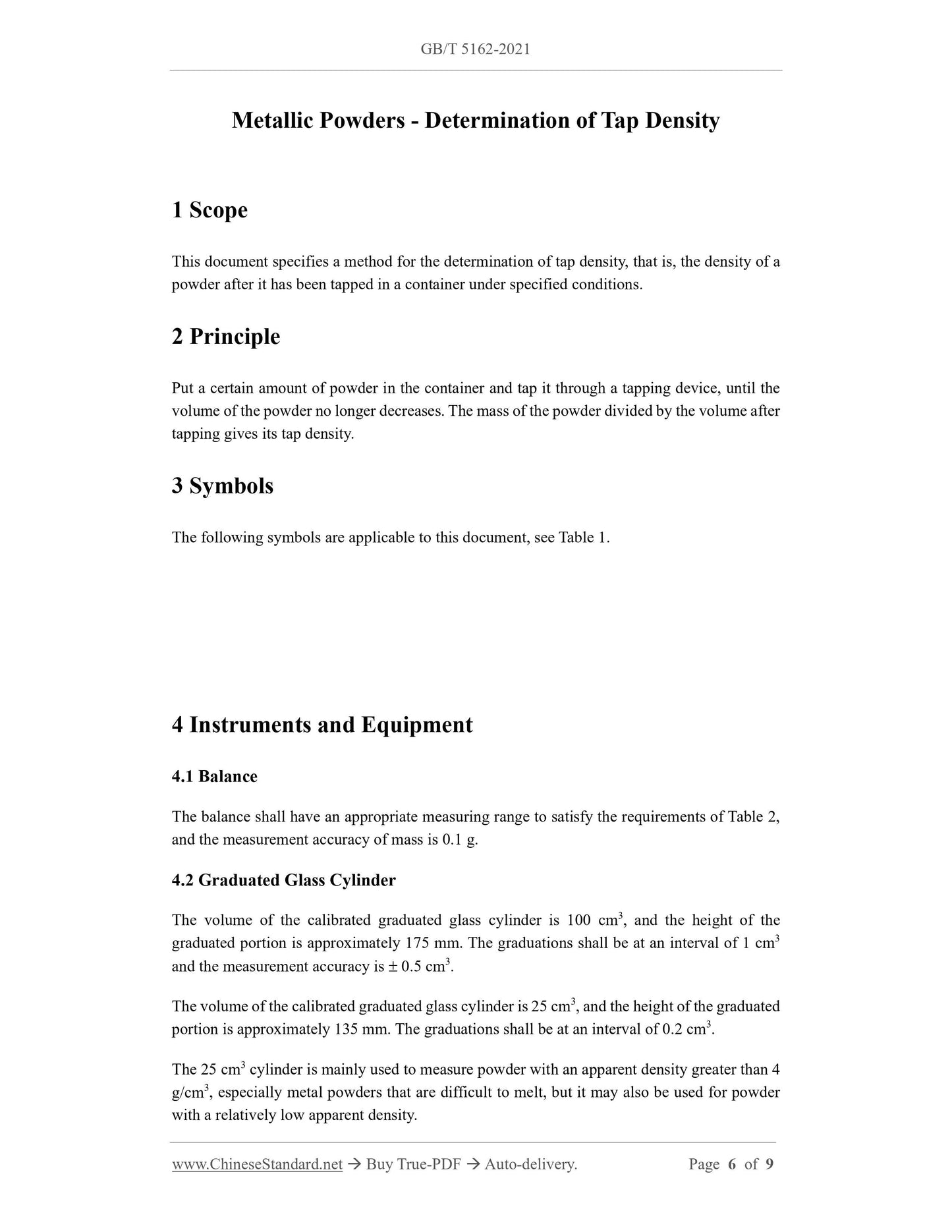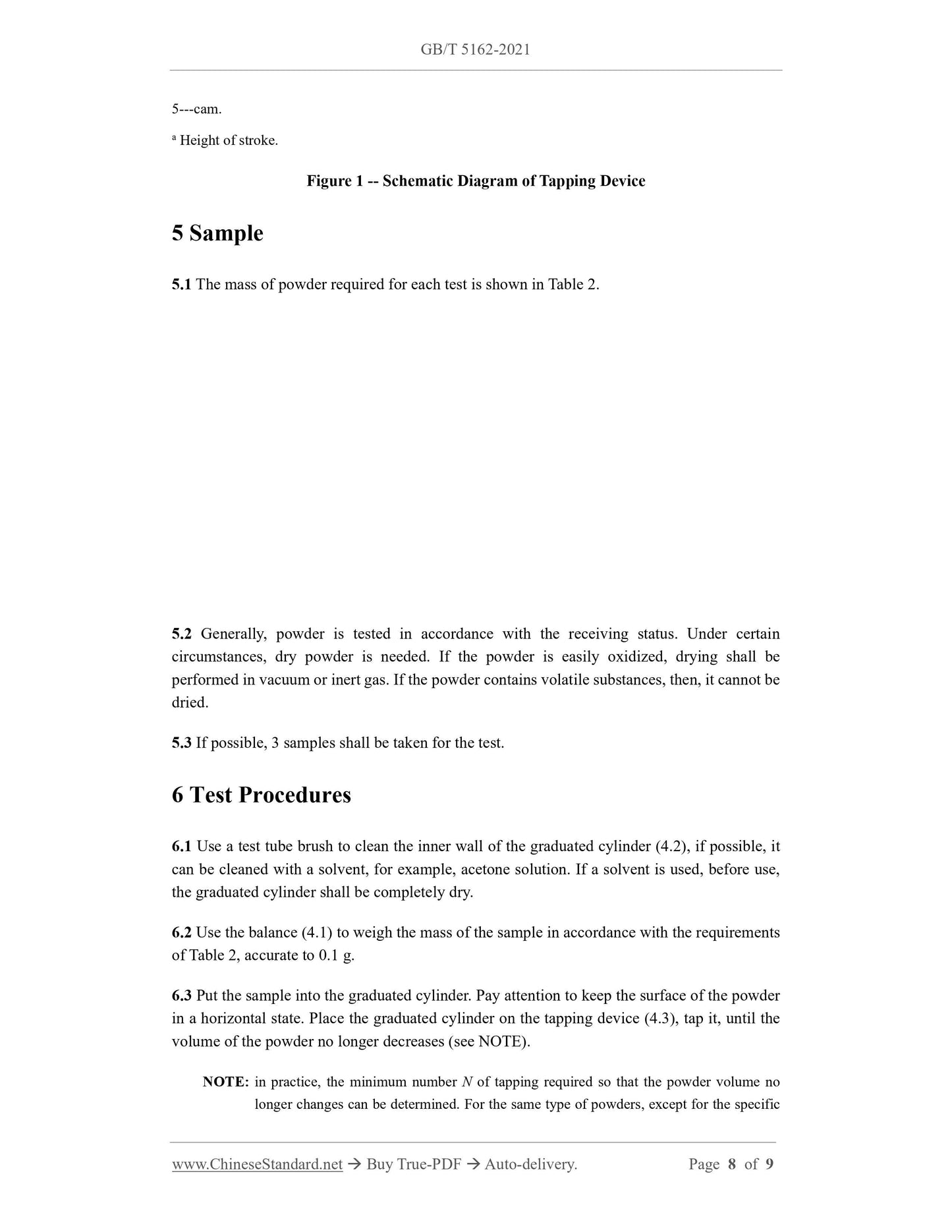1
/
of
5
www.ChineseStandard.us -- Field Test Asia Pte. Ltd.
GB/T 5162-2021 English PDF (GB/T5162-2021)
GB/T 5162-2021 English PDF (GB/T5162-2021)
Regular price
$95.00
Regular price
Sale price
$95.00
Unit price
/
per
Shipping calculated at checkout.
Couldn't load pickup availability
GB/T 5162-2021: Metallic powders - Determination of tap density
Delivery: 9 seconds. Download (and Email) true-PDF + Invoice.Get Quotation: Click GB/T 5162-2021 (Self-service in 1-minute)
Newer / historical versions: GB/T 5162-2021
Preview True-PDF
Scope
This document specifies a method for the determination of tap density, that is, the density of apowder after it has been tapped in a container under specified conditions.
Basic Data
| Standard ID | GB/T 5162-2021 (GB/T5162-2021) |
| Description (Translated English) | Metallic powders - Determination of tap density |
| Sector / Industry | National Standard (Recommended) |
| Classification of Chinese Standard | H21 |
| Word Count Estimation | 6,636 |
| Issuing agency(ies) | State Administration for Market Regulation, China National Standardization Administration |
Share
